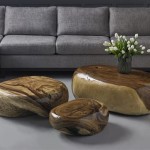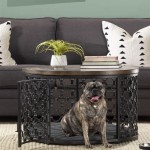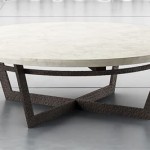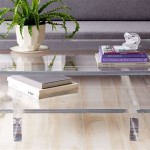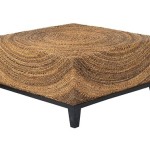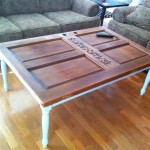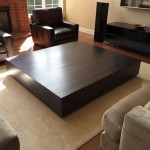What Size Coffee Table for Sofa: A Comprehensive Guide
Selecting the appropriate size coffee table for a sofa is a crucial element in achieving a balanced and functional living space. A coffee table that is disproportionately large or small can disrupt the harmony of the room, hindering both aesthetic appeal and practical usability. This article will delve into the key considerations for determining the ideal coffee table size, ensuring it complements the sofa and enhances the overall flow of the living area.
The process of choosing a coffee table involves several interconnected factors. These include the size and style of the sofa, the dimensions of the room, the intended use of the coffee table, and personal preferences regarding aesthetics. By carefully evaluating these elements, one can make an informed decision that results in a cohesive and functional space.
Determining the Ideal Coffee Table Length
The length of the coffee table is arguably the most critical dimension to consider. As a general rule, the coffee table should be approximately two-thirds the length of the sofa. This proportion helps to maintain visual balance and prevents the coffee table from overwhelming the seating area. For instance, if a sofa is 90 inches long, the ideal coffee table length would be around 60 inches. This guideline provides a solid starting point, but adjustments may be necessary based on specific room layouts and individual preferences.
Exceptions to this rule may arise in more compact living spaces or unconventional sofa arrangements. In smaller rooms, a coffee table closer to half the sofa's length may be more appropriate to avoid overcrowding. Conversely, in larger, more open spaces, a slightly longer coffee table might be desirable to visually anchor the seating area. Ultimately, the goal is to achieve a sense of proportion that feels comfortable and aesthetically pleasing.
Consider the overall layout of the room when deciding on the length. If the sofa is positioned against a wall, the coffee table length can be more closely aligned with the two-thirds rule. However, if the sofa is floating in the center of the room, a slightly shorter coffee table might be preferred to allow for easier navigation around the furniture.
When measuring the sofa, be sure to measure the full length, including the arms. This will provide the most accurate basis for determining the appropriate coffee table length. In cases where the sofa has particularly wide or ornate arms, it might be necessary to adjust the coffee table length slightly downward to prevent it from feeling too imposing.
Selecting the Appropriate Coffee Table Width
The width of the coffee table is another important dimension to consider, as it directly impacts the accessibility and functionality of the space. A coffee table that is too wide can impede movement around the seating area, while one that is too narrow may not provide adequate surface area for its intended purpose. A common recommendation is that the coffee table should be approximately 14 to 18 inches away from the sofa. This distance allows for comfortable legroom while still providing easy access to the table surface.
The width of the coffee table is also dependent on the overall dimensions of the room and the placement of other furniture. In a narrow living room, a slimmer coffee table might be necessary to maintain adequate walking space. Conversely, in a wider room, a slightly broader coffee table can help to fill the space and create a more balanced aesthetic.
Consider the intended use of the coffee table when determining the appropriate width. If the coffee table is primarily intended for holding drinks, snacks, and books, a narrower width may suffice. However, if the coffee table is frequently used for board games, puzzles, or other activities that require more surface area, a wider table will be more practical.
The shape of the coffee table can also influence the perceived width. A rectangular or oval coffee table will typically occupy more visual space than a round or square table of the same width. Therefore, when considering different shapes, it's important to factor in how the shape will impact the overall sense of space and proportion in the room.
Ultimately, the ideal width of the coffee table is a balance between functionality and aesthetics. The goal is to select a width that provides ample surface area without impeding movement or overwhelming the space. This balance can be achieved through careful measurement, consideration of the room layout, and an understanding of the intended use of the coffee table.
Determining the Optimal Coffee Table Height
The height of the coffee table is crucial for both comfort and aesthetics. Generally, the coffee table should be at the same height as the sofa seat cushions or slightly lower. This height allows for easy access to items placed on the table without requiring excessive reaching or bending. A coffee table that is significantly higher than the sofa seat can feel awkward and visually disruptive, while one that is too low can be inconvenient to use.
The recommended height range for a coffee table is typically between 16 and 18 inches. However, adjustments may be necessary based on the specific height of the sofa and the intended use of the table. For instance, if the sofa has particularly high seat cushions, a slightly taller coffee table might be more appropriate. Conversely, if the coffee table is primarily intended for use while sitting on the floor, a lower table might be preferred.
Consider the style of the sofa when determining the appropriate coffee table height. A low-slung, modern sofa may pair well with a lower coffee table, while a more traditional sofa with higher seat cushions might require a taller table. The goal is to create a visual harmony between the two pieces of furniture.
Variations in coffee table height can also be intentional design choices. For example, a nesting coffee table set, where two or more tables of varying heights are grouped together, can add visual interest and provide flexibility in terms of surface area. Similarly, a lift-top coffee table, which can be raised to a higher position for dining or working, can be a practical choice for smaller living spaces.
When measuring the sofa seat height, be sure to measure from the floor to the top of the cushion. This will provide the most accurate basis for determining the appropriate coffee table height. It's also helpful to consider the thickness of any rugs or floor coverings, as these can affect the overall perceived height of the furniture.
In the end, the optimal coffee table height is a matter of personal preference and practical consideration. By carefully evaluating the height of the sofa, the intended use of the table, and the desired aesthetic, one can select a coffee table height that enhances both the comfort and the visual appeal of the living space.
Beyond length, width, and height, the material of the coffee table should also be considered. The material can impact the perceived size and weight of the table. A glass coffee table, for example, can create a sense of openness and lightness, making it a good choice for smaller spaces. Conversely, a solid wood coffee table can feel more substantial and grounding, making it suitable for larger rooms.
The shape of the coffee table can also impact the perceived size and functionality. Round or oval coffee tables can be a good choice for families with young children, as they eliminate sharp corners. Square or rectangular coffee tables can provide more surface area and a more structured look. The shape should complement the overall style of the room and the shape of the sofa.
Consider the storage needs when selecting a coffee table. Some coffee tables come with built-in storage drawers or shelves, which can be a valuable asset in smaller living spaces. If storage is a priority, look for a coffee table that offers ample space for storing books, magazines, remote controls, and other items.
Finally, it is beneficial to consider the overall style of the room when making a decision. The coffee table should complement the existing furniture and décor. A modern living room might benefit from a sleek, minimalist coffee table, while a more traditional living room might be better suited to a more ornate and classic design. Ensuring the coffee table aligns with the overall aesthetic will contribute to a more cohesive and visually appealing space.

How To Choose The Right Size Shape Coffee Table For Your Living Space

Coffee Table Dimension Guide Ashley Home

How To Buy A Coffee Table Living Spaces

The Ultimate Coffee Table Size Guide Apt2b

The Ultimate Coffee Table Size Guide Apt2b

How To Buy A Coffee Table Living Spaces

Coffee Table Dimensions How To Choose The Right Size Tidbits Twine

How To Choose The Right Size Shape Coffee Table For Your Living Space

Four Tips For Choosing The Right Coffee Table Post

Star Furniture
Related Posts

